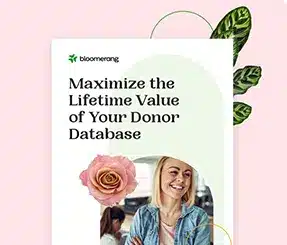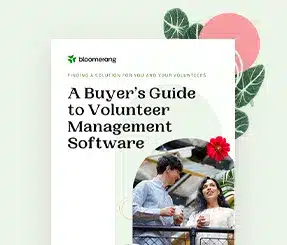How to Put Joy into Major Gift Solicitation and Philanthropy


Full Platform Overview Chat With Us



Full Platform Overview Chat With Us





Whenever I conduct a board session on philanthropy, I come across big-time resistance to fundraising. People have a lot of deep-seated, negative beliefs when it comes to asking people for money. When asked to give one word that comes to their minds when I say the “F” word, I’ll get:
You get the idea.
People really do think of fundraising as an “F” word.
It’s important to let folks vent and get all their negative feelings about fundraising out on the table. It’s equally important to gently move them to a different place.
When you allow folks to continue to feel negatively about fundraising, they never forget. It burns into their brains. They’ll say things like “Oh, fundraising, that’s not for me!” “I’m not good at it, so it’s better if someone else does it.”
As well intentioned as you may be, you’ll go wrong if you agree with folks that fundraising is distasteful and don’t try to reframe it as something joyful. Here’s what I mean: Does this sound like something you or your staff may have said to reluctant fundraisers?
When you say these things you’re being complicit in the ‘fact’ that fundraising is awful. This attitude won’t take you where you want to go. You can NOT be this way if you’re going to succeed in joyful, meaningful, successful nonprofit work. Nope. Nope. Nope.
Fundraising is servant to philanthropy, it’s noble and it’s both a privilege and responsibility. Feel free to read more about this framework HERE and HERE.
You need to do something proactive to overcome people’s prejudices about fundraising.
I encourage folks to share all their stories about guilt, peer pressure, strong arm tactics, etc. and get all their bad energy about fundraising out on the table. You can ask people individually, or do this as a group session where you write everyone’s answers on an easel or white board.
Generally, you’ll find everyone’s answers fall into a few categories of poor fundraising practice:
When fundraising is framed as ‘arm twisting’ and ‘hitting people up,’ it’s only natural that those who are approached feel a bit wounded. Assure folks you are definitely not going to engage in this negative manner!
Ask folks what comes to their mind with the word “philanthropy.” When I do this with boards, an entirely different story emerges! Answers include:
This exercise enables folks to see there can be a positive way to look at asking for and giving major gifts. You’re making progress!
Now, pose a positive question to them.
I’ve found people’s answers tend to fall into categories having to do with:
This exercise helps you solidify the progress you made when you reframed fundraising as philanthropy. Now, remind folks these are the same joyful feelings other donors have when they make a passionate philanthropic investment.
In other words, asking enables donors to become a partner in a cause that is bigger than themselves. Asking enables donors to find a way to be the change they want to see in the world.
“The person seeking the gift should never demean the asking by clothing it in apology. Solicitation gives the prospect the opportunity to respond with a ‘yes’ or a ‘no.’ The solicitation should be so executed as to demonstrate to the prospective contributor that there can be a joy to giving, whether the gift measures up to the amount or not. Fundraising professionals must teach this joy by asking properly and in a manner that puts the potential contributor at ease.”
— Henry A. Rosso, Achieving Excellence in Fundraising
Not asking major donor prospects for gifts denies them the joy of giving.
Begin by exploring what brings your individual donor prospect joy. If you don’t know what floats your donor’s boat, you can’t help them set a proper course to reach their preferred destination.
Philanthropy gives people purpose. And purpose gives people joy. Philanthropy facilitators are, as my teacher Hank Rosso said, the fundraisers who “teach the gentle joy of giving.”
Major donor fundraising begins with ‘getting to know you’ conversations and visits.
You’ll know your donor’s time for solicitation has come only if you’ve been getting to know them through a planned series of cultivation “moves.” People generally move along a continuum, from interest… to awareness… to engagement… to investment. [I delve deep into this in my “Winning Major Gift Fundraising Strategies” online course].
Here’s what you want to endeavor to uncover.
First find out a bit about their personal history with passionate philanthropy.
You also want to uncover what most ignites their personal passions:
Consider what you can offer to bring your major donor prospect joy. From the answers to the first three questions above, you’ve learned quite a bit about what motivates your donor. Think about what you can do to similarly inspire them and arouse their interest. For example:
From the answers to the last three questions above, you’ve learned quite a bit about their priority areas of interest. Think about what your organization does that matches your donor’s values and addresses their chief concerns. For example:
There’s sadly not much joy to be found in asking questions via mail or email. You’re ultimately not going to learn all you need to know by simply sending a survey.
Major donor fundraising is a contact sport.
PERSONAL is how you relate to and treat particular people in a manner that is different from everyone else. It’s really the only way to build a true relationship.
So ask folks for a visit, not an appointment. Appointments are serious and too-often dreaded, like going to the doctor, dentist or tax preparer. Visits are fun! Visits are friendly! And visits make the donor feel important.
Ask open-ended questions that draw your donor out. Follow up with open-ended questions that show you were listening. Use friendly open body language (lots of smiling, head nodding and leaning in; no crossing of arms, leaning away, eye rolling or scowling).
When you leave, your donor should be smiling and thinking: “That was so nice. They really seem to want to get to know me. They seem to like me and value what I have to offer. Cool!”

Comments